Exploring the history of World War II in Berlin can be a profoundly impactful experience. Through guided tours, visitors can uncover the city’s pivotal role in the conflict, from iconic landmarks like the Brandenburg Gate to lesser-known sites that tell a complex story. Whether it’s standing in the shadow of the Reichstag Building or reflecting at the Memorial to the Murdered Jews of Europe, this immersive journey allows one to gain a deeper understanding of Berlin’s wartime legacy. For those seeking to explore this crucial chapter of history, the World War II Tour provides a remarkable opportunity to confront the past and consider its lasting significance.
About Your Stay
-
Explore iconic WWII sites like the Reichstag Building, Memorial to the Murdered Jews of Europe, and former Gestapo Headquarters on a private Berlin tour.
-
Witness the historical significance of the Brandenburg Gate, which was a symbol of division during the Cold War and now represents unity and resilience.
-
Visit remnants of the Berlin Wall, including the East Side Gallery and Berlin Wall Memorial, to engage with the city’s complex historical narrative.
-
Discover lesser-known historical sites, such as the Bendlerblock, which was the location of the July 1944 plot against Hitler.
-
Gain insights into Germany’s tumultuous past and cultural heritage through visits to the German-Russian Museum and Charlottenburg Palace.
Meeting Point and Pickup
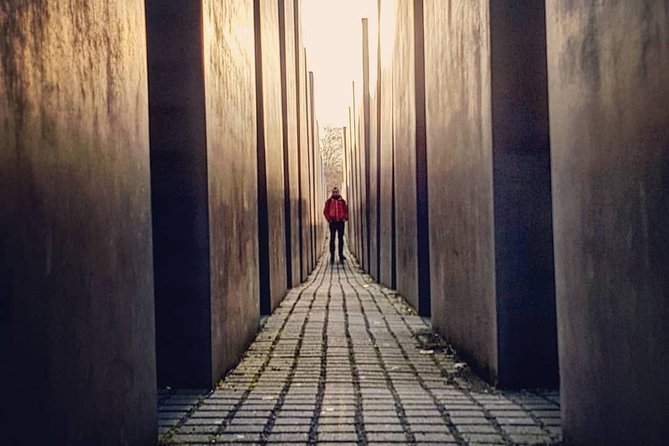
The tour meeting point is located at Ebertstraße 24, 10117 Berlin, Germany, outside Haupfingerbräu next to the Brandenburg Gate.
Participants have the option to head directly to the meeting point or request pickup. If requesting pickup, the guide will meet them on foot in the hotel lobby.
The tour is a private activity, with only your group participating.
The tour is accessible, accommodating wheelchair users, strollers, and service animals, and is conveniently located near public transportation.
Fascinated by Berlin's past? More historical tours we've covered
Tour Highlights in Berlin
On this World War II tour in Berlin, visitors explore a wealth of historical sites that offer insights into the city’s pivotal role during the conflict. The tour takes participants to iconic landmarks like the Reichstag building, site of the famous 1945 Soviet flag raising, and the Memorial to the Murdered Jews of Europe, a somber tribute to the victims of the Holocaust. Guests also visit lesser-known but equally impactful locations, such as the former Gestapo headquarters and the Bendlerblock, where the July 1944 plot to assassinate Hitler was planned.
| Site | Significance |
|---|---|
| Reichstag Building | Site of 1945 Soviet flag raising |
| Memorial to Murdered Jews of Europe | Tribute to Holocaust victims |
| Former Gestapo Headquarters | Symbol of Nazi oppression |
| Bendlerblock | Location of July 1944 plot against Hitler |
Significance of the Brandenburg Gate
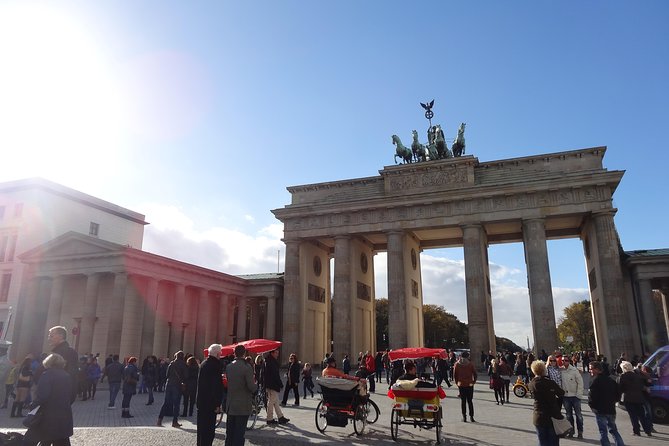
Why does the Brandenburg Gate hold such profound significance in Berlin’s World War II history?
As one of Berlin’s most iconic landmarks, the Brandenburg Gate stood witness to many pivotal moments during the war. In 1945, the gate was the site of the final battle between Soviet and Nazi forces, marking the fall of the Third Reich.
After the war, the gate was located in East Berlin, becoming a symbol of division between the communist East and democratic West. Its position along the Berlin Wall made it a poignant reminder of Germany’s painful history.
Today, the restored Brandenburg Gate stands as a powerful symbol of unity, peace, and the resilience of the human spirit.
Remnants of the Berlin Wall
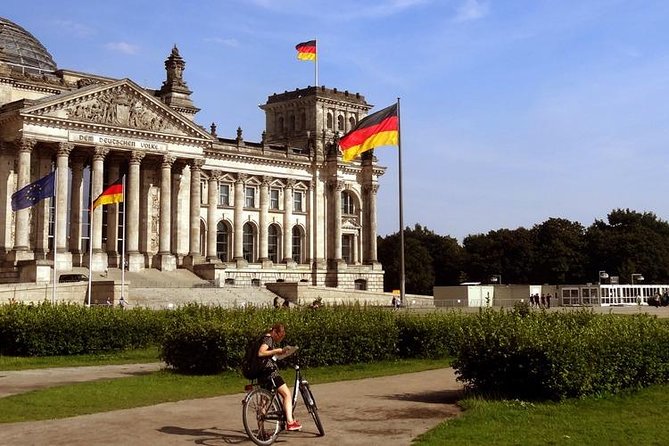
Throughout Berlin, visitors can still find remnants of the infamous Berlin Wall that once divided the city. These remnants serve as powerful reminders of the city’s tumultuous past and the struggles of the Cold War era.
Some key remnants include:
-
The East Side Gallery, a 1.3-kilometer stretch of the original wall that has been transformed into an outdoor art gallery.
-
The Berlin Wall Memorial, which includes a preserved section of the wall and a documentation center.
-
The Topography of Terror, an outdoor and indoor exhibition that explores the history of the SS and Gestapo headquarters located near the former wall.
These remnants offer visitors a unique opportunity to engage with Berlin’s complex history and gain a deeper understanding of the lasting impact of the Berlin Wall.
Memorial to the Murdered Jews of Europe
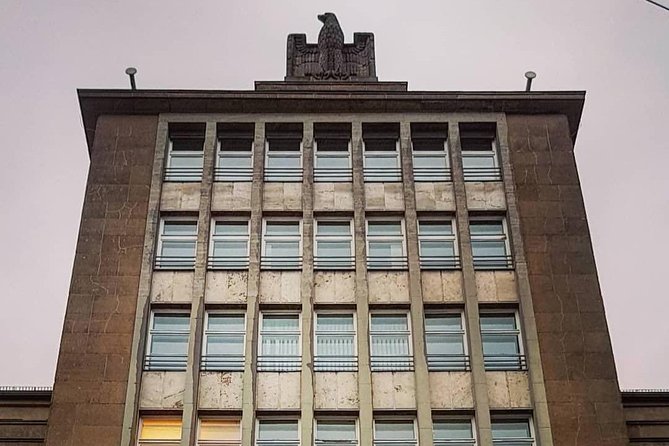
The Memorial to the Murdered Jews of Europe, also known as the Holocaust Memorial, is a striking and sobering monument located in the heart of Berlin.
Designed by architect Peter Eisenman, it consists of 2,711 concrete slabs arranged in a grid pattern, creating an unnerving and disorienting experience for visitors. The memorial’s unique design encourages contemplation and reflection on the immense tragedy of the Holocaust.
Covering an area of 4.7 acres, the memorial serves as a powerful reminder of the millions of Jews murdered by the Nazi regime during World War II. Visitors can wander through the maze-like installation, finding their own personal connection to the solemn history it represents.
- Discover Berlin Half-Day Walking Tour
- Sachsenhausen Concentration Camp Memorial Tour From Berlin
- Explore Berlins Top Attractions 3-hour English Walking Tour
- Third Reich Berlin: Hitler and WWII Walking Tour
- Sachsenhausen Concentration Camp Memorial Tour With Max 15 People
- Visit to the Sachsenhausen Concentration Camp
Exploring the Reichstag Building
Across the street from the Memorial to the Murdered Jews of Europe, the Reichstag building stands as a testament to Germany’s tumultuous past and its journey towards democracy.
This iconic structure, home to the German parliament, has witnessed pivotal moments in the nation’s history, including the infamous Reichstag fire in 1933 and its subsequent restoration after German reunification.
The Reichstag’s neoclassical architecture and striking glass dome offer visitors a unique opportunity to:
- Explore the building’s rich history and the role it played in Germany’s political landscape
- Climb to the top of the dome for panoramic views of the city
- Gain insight into the country’s democratic processes through interactive exhibits and educational displays
Guided Tour of Charlottenburg Palace
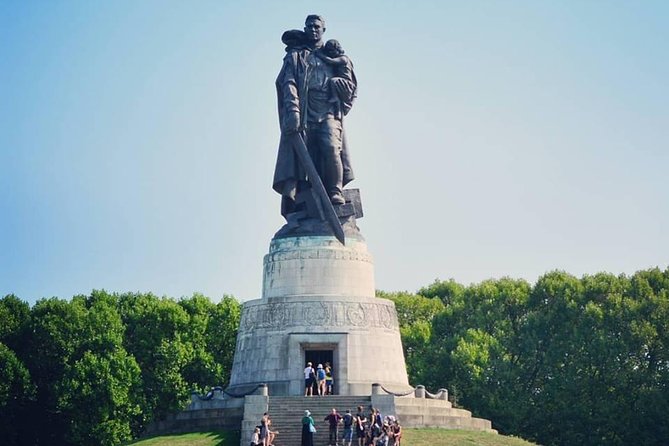
After exploring the history-laden Reichstag building, visitors can venture to the opulent Charlottenburg Palace, the largest royal summer residence in Berlin.
This magnificent 18th-century Baroque palace offers a glimpse into the lavish lifestyles of Prussian royalty. Guided tours take guests through the ornate halls, salons, and gardens, showcasing the palace’s impressive architecture, sumptuous furnishings, and remarkable art collection.
From the grand Throne Room to the tranquil palace gardens, the tour provides a captivating look into Germany’s royal past. With its stunning interiors and well-preserved historical significance, Charlottenburg Palace stands as a testament to the grandeur and opulence of the Prussian monarchy.
Visiting the German-Russian Museum
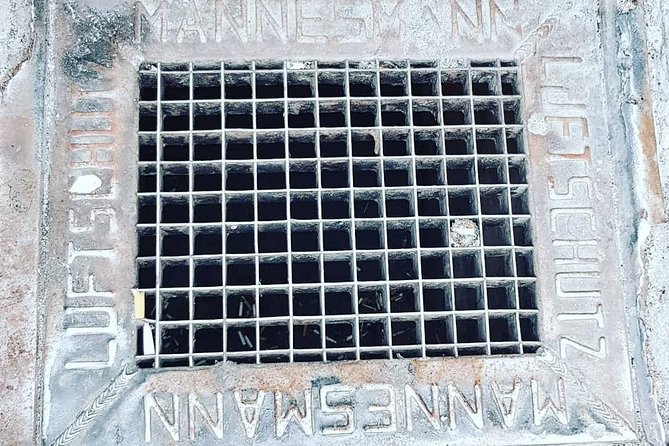
Amidst the multitude of historical sites in Berlin, the German-Russian Museum stands as a poignant reminder of the complex relationship between the two nations.
This museum, located in Karlshorst, offers visitors an in-depth exploration of the events surrounding the end of World War II in Europe.
The museum’s exhibits include:
- Detailed accounts of the surrender of the German Wehrmacht in 1945
- Artifacts and memorabilia from the war’s final days
- Insights into the post-war occupation and division of Germany
Visitors can gain a deeper understanding of the historical significance of this pivotal moment and the lasting impact it had on the region.
Worth The Stay
The World War II Tour in Berlin is an immersive journey through the city’s tumultuous past. Visitors explore iconic landmarks and lesser-known historical sites, gaining a deeper understanding of Berlin’s complex legacy during the conflict. This tour offers a profound exploration, highlighting the city’s resilience and the enduring impact of the events that shaped it.
More Historical Tours in Berlin
- Berlin Historical Self-Guided Tour of the City in One Walk
- East Berlin History Tour With a Local Expert: 100% Personalized & Private
- Berlin History Tour With a Local Expert: 100% Personalized & Private
- Group Driving Tour (From 1 – 6 People): Jewish Heritage Tour of 5 Hours.
- Lgbt*Bike Tour – Berlin Invents Homosexuality – History From 1850
- Protest and Resistance in Berlin Historical Walking Tour
More Tours in Berlin
More Tour Reviews in Berlin
Not for you? Here's more things to do in Berlin we have recnetly reviewed
- 5 Best Craft Beer Tours And Tastings In Berlin
- 3 Best Shopping Tours In Berlin
- 7 Best Christmas Experiences In Berlin
- 16 Best Dining Experiences In Berlin
- 2 Best 2 Day Tours In Berlin
- 4 Best Lunch Experiences In Berlin
- 2 Best Full-Day Tours In Berlin
- 15 Best Photography Experiences In Berlin
- 12 Best Dinner Tours In Berlin
- 25 Best Cruises And Boat Tours In Berlin
- 25 Best Food Tours In Berlin
- Third Reich Quest Experience in Berlin
